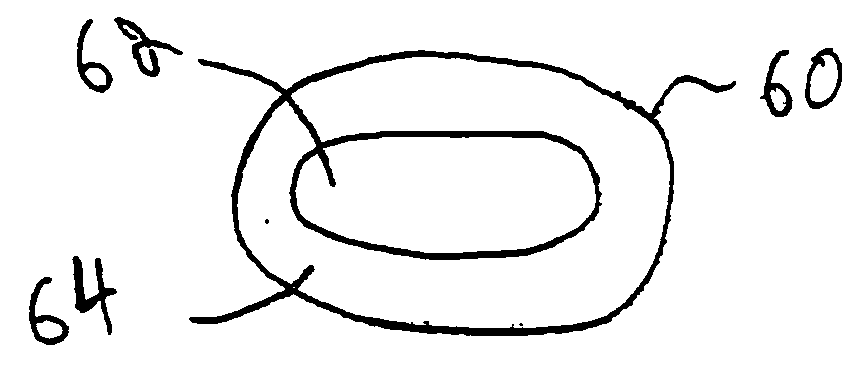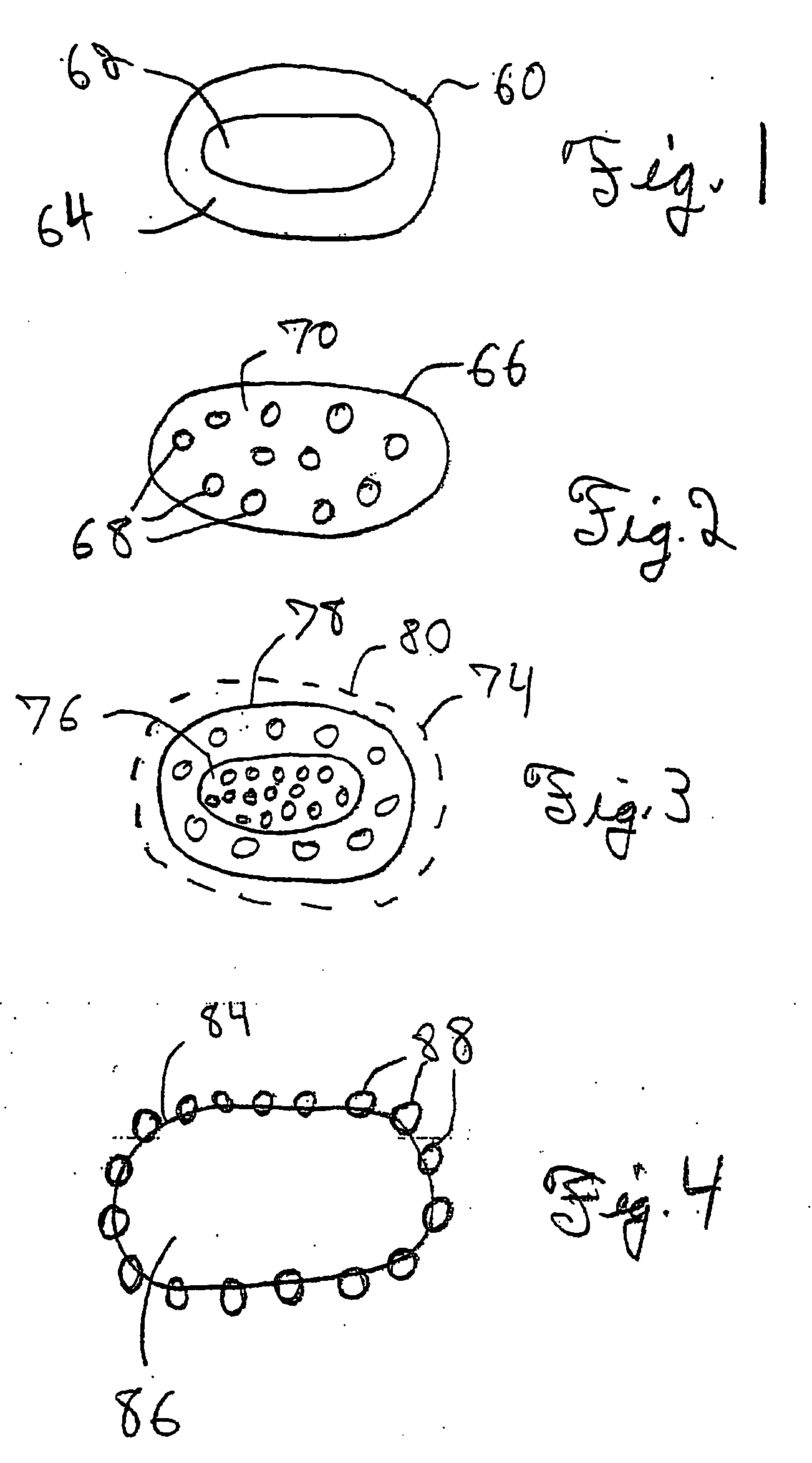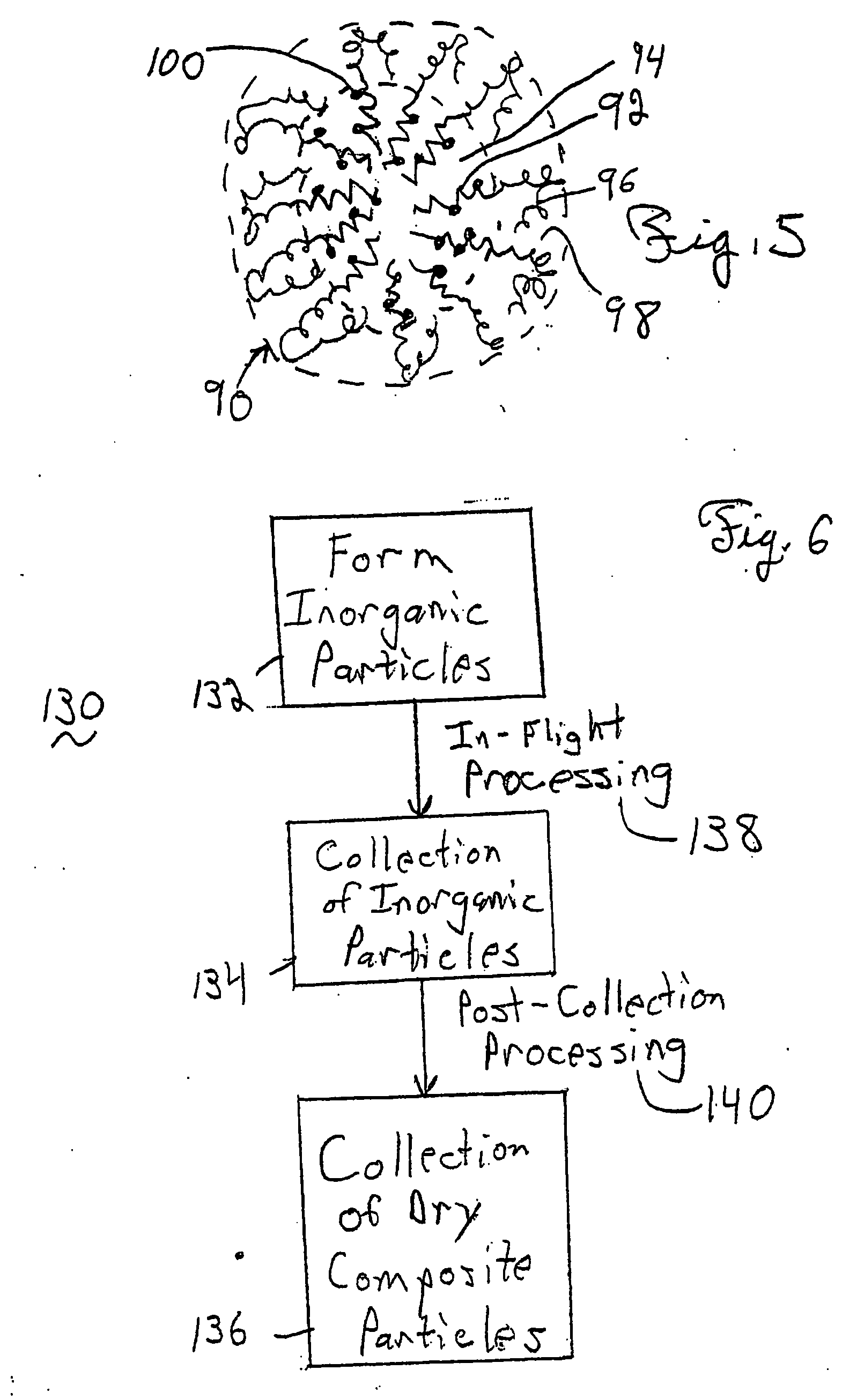Nanostructured composite particles and corresponding processes
a technology composite particles, applied in the field of nanostructured composite particles, can solve problems such as difficult or impossible to achieve with standard materials
- Summary
- Abstract
- Description
- Claims
- Application Information
AI Technical Summary
Benefits of technology
Problems solved by technology
Method used
Image
Examples
Embodiment Construction
[0026] Improved composite particles in dry powder form can have reduced average particle diameters and / or improved particle structures, in which the particles comprise composites of polymer and inorganic particles. The polymers can be chemically bonded with the inorganic particles, or the polymer can otherwise function as a binder with respect to the inorganic particles, or the polymer can be physically adsorbed over the inorganic particles. Polymers can be organic or silicon-based polymers, and an ordered polymer can be useful to form more complex structures with desired properties. Improved processing approaches can be used efficiently to form desired materials. For example, in flight approaches can be used to modify particles following formation in a reactive stream. Also, aerosol approaches, such as spray drying, can be used to control particle formation in desirable ways to form composites with suitable properties. Composite particles with appropriate composition can be used as...
PUM
| Property | Measurement | Unit |
|---|---|---|
| particle size | aaaaa | aaaaa |
| particle size | aaaaa | aaaaa |
| particle size | aaaaa | aaaaa |
Abstract
Description
Claims
Application Information
 Login to View More
Login to View More - R&D
- Intellectual Property
- Life Sciences
- Materials
- Tech Scout
- Unparalleled Data Quality
- Higher Quality Content
- 60% Fewer Hallucinations
Browse by: Latest US Patents, China's latest patents, Technical Efficacy Thesaurus, Application Domain, Technology Topic, Popular Technical Reports.
© 2025 PatSnap. All rights reserved.Legal|Privacy policy|Modern Slavery Act Transparency Statement|Sitemap|About US| Contact US: help@patsnap.com



